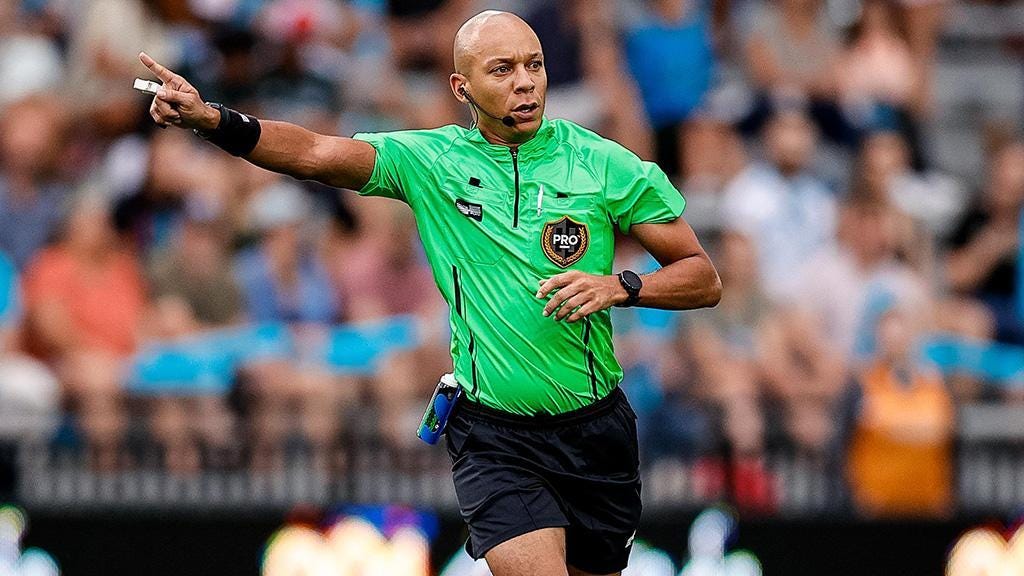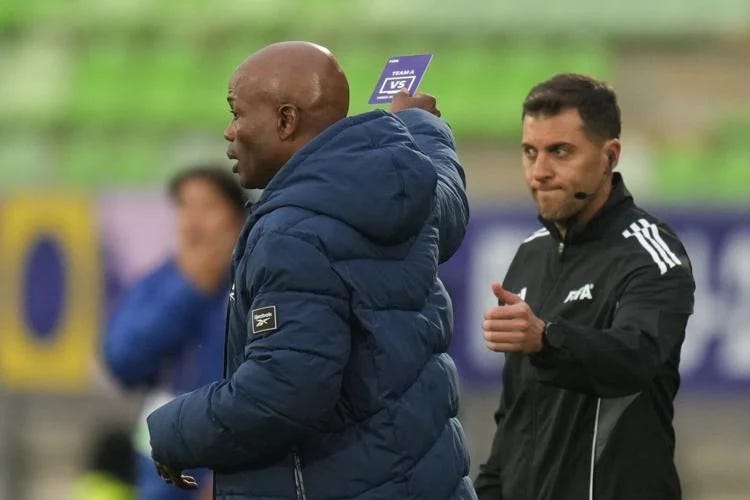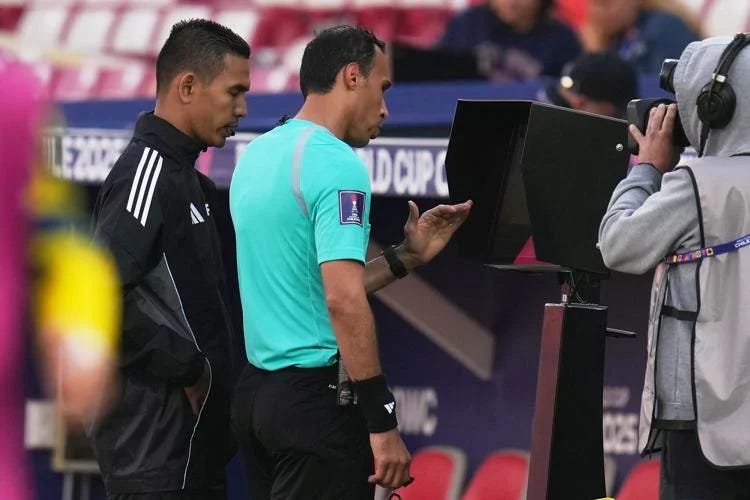Why the USL’s New Division One League Should Adopt Football Video Support
When the United Soccer League’s long-awaited Division One league debuts in 2028, it will mark one of the most significant evolutions in American soccer history. For the first time, a competition outside of Major League Soccer will operate at the sport’s highest professional tier. That move brings both promise and pressure. Beyond building competitive rosters and drawing fans, the new league must ensure that every aspect of its operation—from player development to officiating—reflects the professionalism and integrity expected of top-flight football.
Of all the growing pains the league is likely to face, officiating may prove the most visible. Even in the established USL Championship, moments of controversy have too often overshadowed matches: disallowed goals, questionable penalties, missed red cards—all the incidents that spark post-game frustration among coaches and fans alike. Without the resources to implement a full Video Assistant Referee (VAR) system, the league has been left to weather those moments as best it can.
That may soon change. A new alternative, recently tested by FIFA, could provide exactly what the USL needs—a system that raises officiating standards without adding crippling financial costs. It’s called Football Video Support, or FVS.
What Is Football Video Support — and How It Differs from VAR
Football Video Support is FIFA’s newest officiating innovation, designed to bring the fairness of video review to leagues that cannot afford full VAR infrastructure. The system is currently being tested at the 2025 FIFA U-20 World Cup, following smaller trials at youth tournaments and friendly competitions.
At its core, FVS serves the same purpose as VAR: to correct clear and obvious mistakes in critical game situations. But it accomplishes that goal with a radically simplified structure. Instead of relying on a full team of video match officials, centralized replay rooms, and an array of high-end camera feeds, FVS pares the system down to what’s essential.
Only three cameras are required to operate the system, and rather than a team of video assistants monitoring every play, a single review operator manages the replays. When a potentially incorrect decision occurs—such as a disputed goal, penalty, or red card—it isn’t an unseen official who triggers the review. Instead, team managers are given two challenges per match. If they believe an officiating mistake has occurred, they can formally request a review by signaling to the fourth official.
Once a challenge is initiated, the referee reviews the available footage on a pitch-side monitor. If the video shows conclusive evidence that the original decision was wrong, it can be overturned. If the evidence is unclear, the call on the field stands. Play then resumes immediately.
FVS is limited to the same four categories of review as VAR: goal or no-goal decisions, penalty or no-penalty decisions, direct red cards, and cases of mistaken identity. But unlike VAR, there are no constant interruptions, no long pauses for unseen officials to intervene, and no expensive control rooms full of monitors and technicians.
This approach makes FVS dramatically more affordable and easier to implement. It doesn’t require fiber-linked broadcast trucks or multi-million-dollar equipment. And because the review process is initiated from the sideline—not the booth—it gives coaches and managers direct ownership of when technology is used.
In short, VAR was designed for the world’s richest leagues; FVS was built for everyone else. It’s a way to ensure fairness without sacrificing the flow of the game or the financial sustainability of the league.
Why It Fits the USL’s Division One Vision
The USL’s Division One project represents more than just a new league; it’s a statement of intent. By creating an independent, top-tier division, the USL is challenging decades of structure in American soccer and giving clubs outside MLS a legitimate path to the sport’s highest level.
But with that comes expectation. The league will be judged not only on its quality of play but also on its ability to operate with credibility and professionalism. Poor officiating—or even the perception of it—can quickly erode that credibility. Fans have long been vocal about inconsistencies across the USL system, and clubs have privately echoed those frustrations. In a competition that hopes to introduce promotion and relegation in the future, those errors could mean the difference between staying up or going down.
A full Video Assistant Referee system, while ideal in theory, would be prohibitively expensive for a league of this scale. Setting up centralized replay operations, staffing multiple video officials, and installing eight or more broadcast-grade cameras in every venue could cost millions of dollars annually—far beyond what most independent clubs could support.
Football Video Support, on the other hand, offers a pragmatic solution. With only three required cameras and minimal additional staffing, it can be implemented at a fraction of the cost while still delivering the benefits of video review. It would allow the league to prevent the most glaring officiating mistakes—the kind that alter scorelines, playoff positions, and fan trust—without overextending its resources.
Moreover, FVS aligns perfectly with the league’s philosophy of empowering its clubs. By granting managers control over when to challenge a decision, the system integrates seamlessly with the competitive fabric of the game. It mirrors the challenge systems used successfully in other American sports, providing not only fairness but also a strategic layer that fans can follow and debate.
Building Integrity Without Breaking Budgets
In a practical sense, implementing FVS across the USL’s Division One would not require a fundamental overhaul of existing operations. Most USL Championship venues already have broadcast camera setups that meet or exceed the minimum requirements. Each match would simply need a designated review operator, a monitor for the referee, and clear procedural training for match officials and team staff.
The rules are straightforward: two challenges per team, retained if successful, lost if not. Reviews are limited to match-defining situations, preventing excessive interruptions or abuse of the system. The process is quick, transparent, and easy for supporters to understand—a stark contrast to the often opaque, multi-minute delays that plague VAR in major leagues.
By adopting FVS, the USL can improve match integrity and fan confidence without inflating its operational costs. It can set a new standard for how a modern, independent league approaches technology: not by mimicking wealthier competitions, but by innovating within its own means.
Just as importantly, the league would signal to players and fans alike that it values fairness and accountability. For a competition seeking to elevate itself to Division One status, that message matters as much as any signing or sponsorship deal.
The Broader Opportunity
If the USL embraces Football Video Support, it could position itself at the forefront of officiating innovation in North America. While MLS has used full VAR for several seasons, no domestic league has yet implemented an alternative review model designed for cost efficiency and scalability. By piloting FVS, the USL could not only improve its own product but help shape the global conversation around accessible officiating technology.
FIFA’s endorsement of the system lends credibility. Early tests have already taken place in youth tournaments and international friendlies, and if the 2025 U-20 World Cup rollout proves successful, the technology could become widely available by the time the USL’s new league begins play. That timeline offers the perfect window for adoption.
In the broader landscape of American soccer—where lower-division leagues are often forced to balance ambition against financial reality—FVS represents something rare: a tool that can deliver real improvement without a major burden.
A League for the Future
When the USL Division One league finally takes the field, it will do so as a league unlike any the country has seen before—independent, open, and driven by the principle that competition should be earned. To live up to that vision, it must also ensure that results are decided by players, not by preventable officiating errors.
Football Video Support offers a path to achieve that balance. It’s modern without being extravagant, decisive without being disruptive, and accessible without sacrificing integrity. For a league building itself from the ground up, those are exactly the traits that define sustainable success.
By adopting FVS, the USL could lead not just in competition, but in innovation—setting a precedent for how the game can evolve responsibly. Fairer matches, more consistent officiating, and greater confidence from fans and clubs alike. That’s the foundation every top-tier league should be built on.
And for the USL’s new Division One, it could be the start of something truly transformative.
Leading From the Middle
For years, the USL has lived in the shadow of Major League Soccer on one side and the emerging lower divisions on the other. Yet that middle ground is precisely where the league’s strength lies—ambitious enough to push the sport forward, but pragmatic enough to build sustainably.
Embracing Football Video Support would be an act of leadership from that middle ground. It would show that innovation in American soccer doesn’t have to start at the top—it can come from those building something new, something more balanced, something that reflects where the sport is actually growing.
The USL has always positioned itself as the league for the next generation—of players, clubs, and supporters. Now, it has the chance to lead that generation into a fairer, more accountable era of the game.
And sometimes, leadership doesn’t mean following the biggest leagues in the world. It means being bold enough to find a better way.





